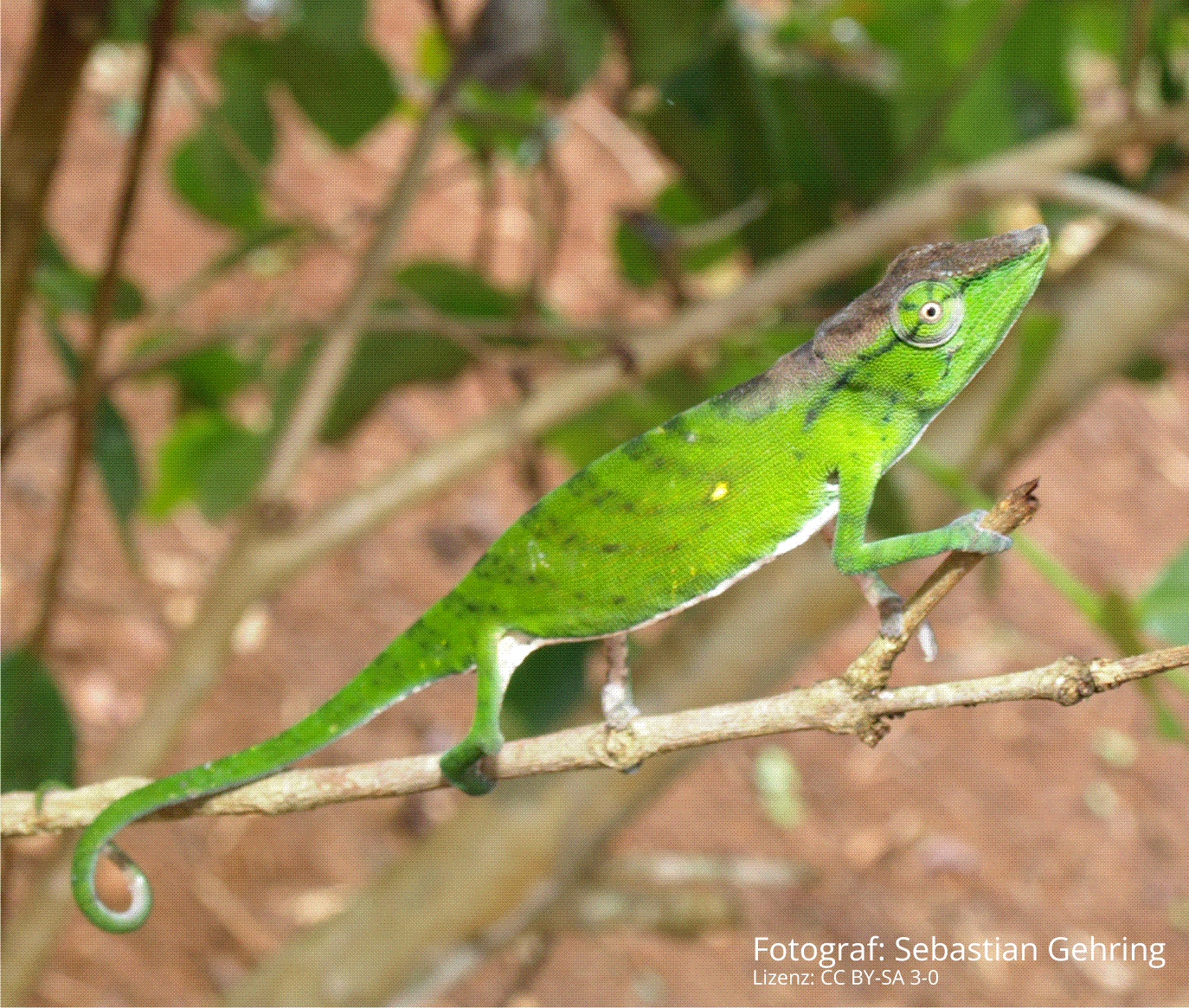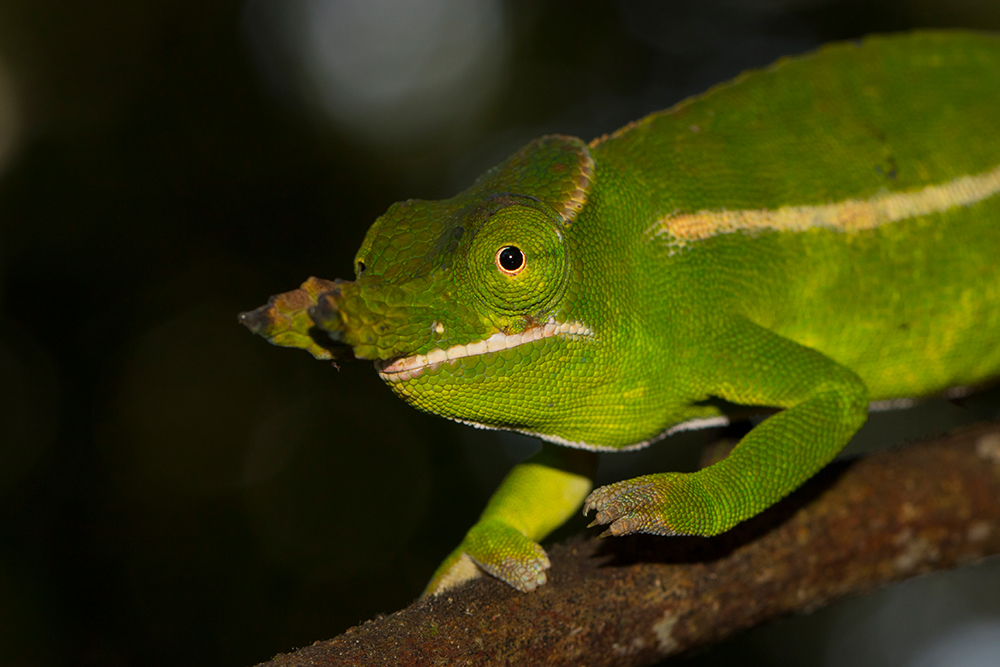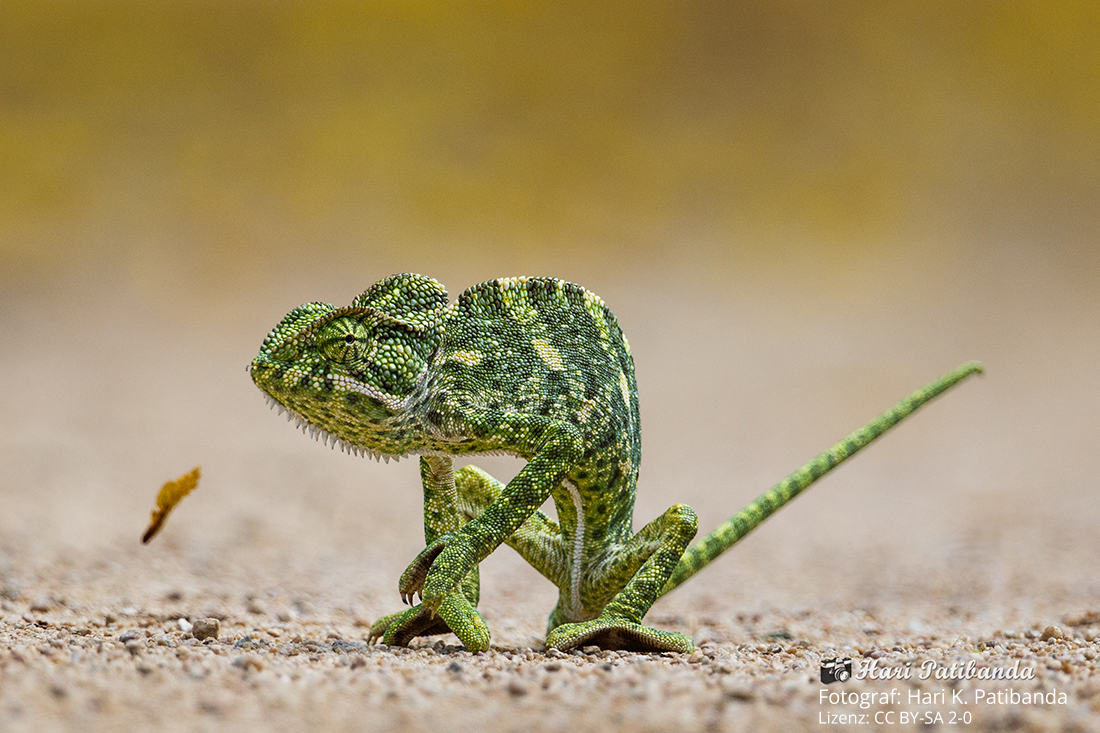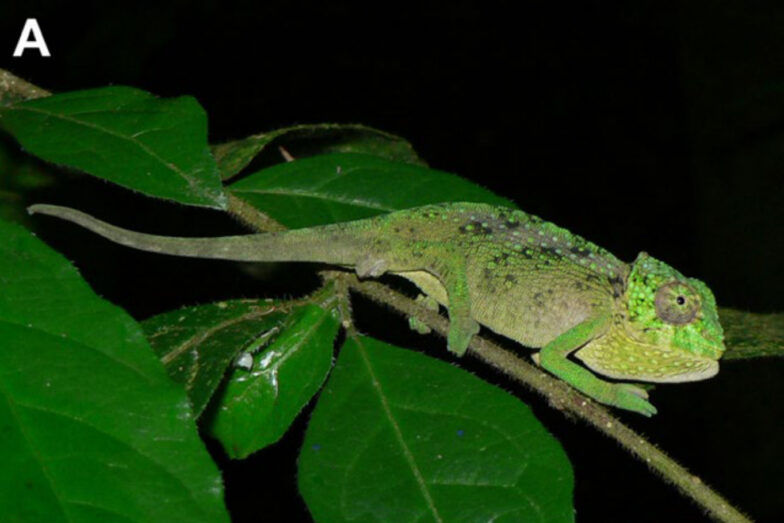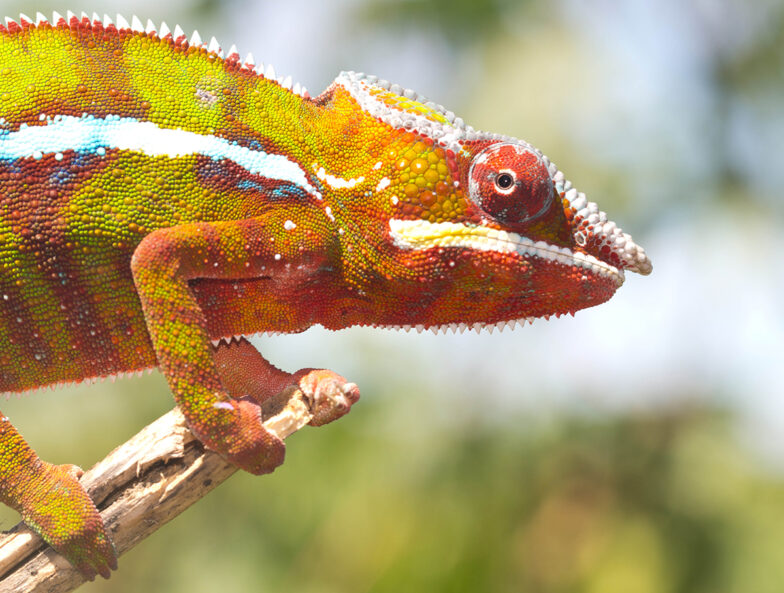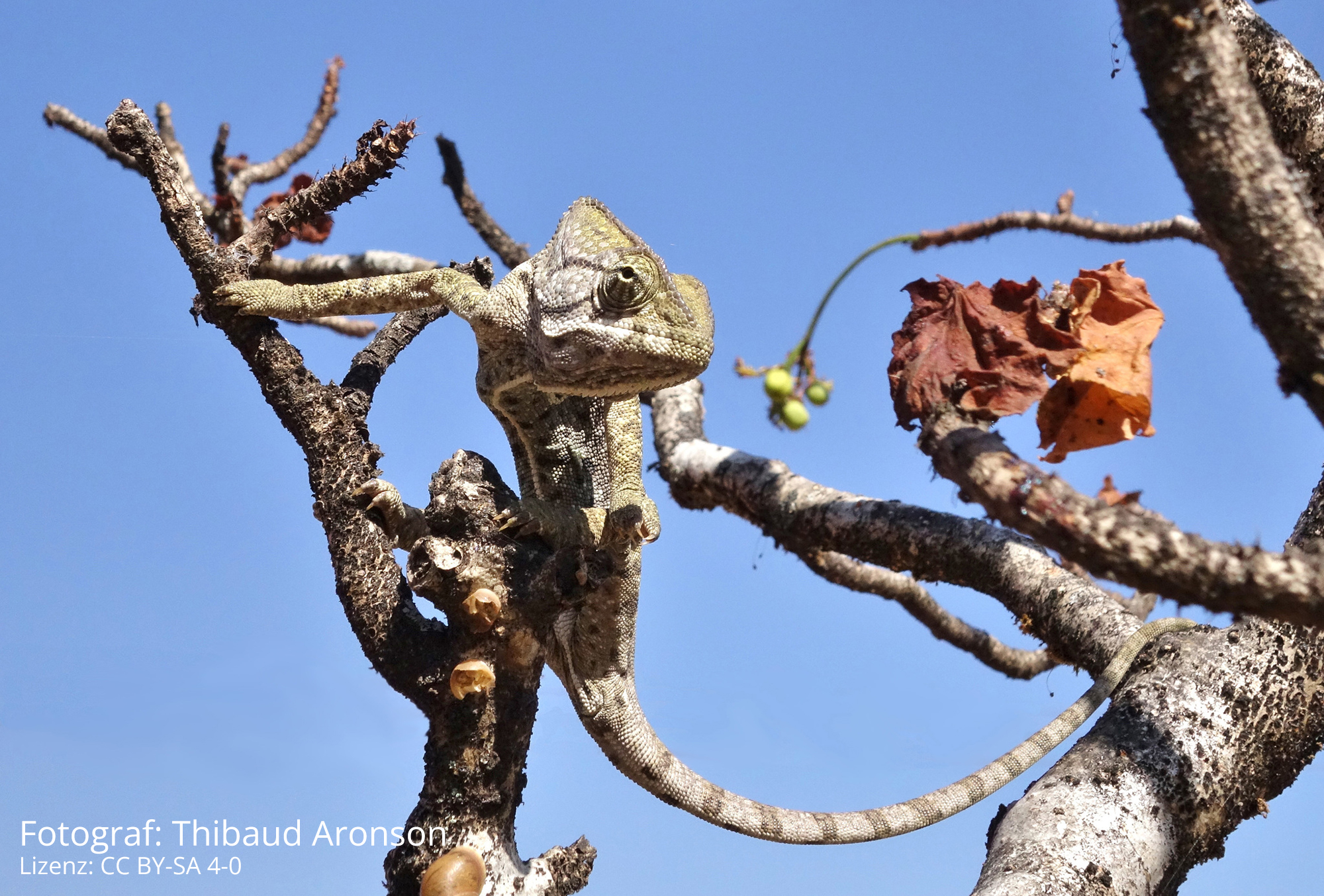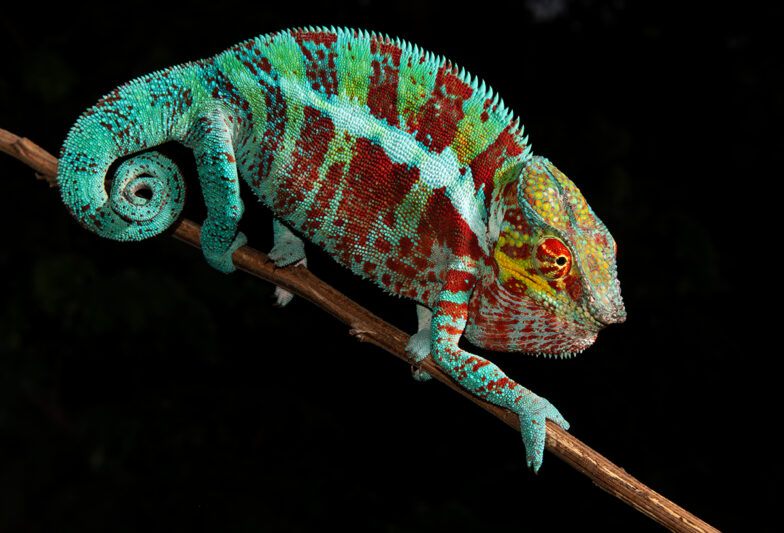Calumma tarzan, the Tarzan chameleon, was only described in 2010. It was named after the place where it was found, Tarzanville, a small village in the Anosibe An’Ala region in the centre-east of Madagascar. Due to the previously assumed very small distribution area, the species was immediately classified as “critically endangered” on the IUCN Red List.
In 2020 and 2021, Malagasy scientists searched for the species in many other places in eastern Madagascar – and promptly found it, as a recent publication reports. They searched 46 transects, each one kilometre long, in 23 different forest fragments. A further 28 transects, each 200 metres long, were examined in order to assess the population density. Calumma tarzan was found in 14 of the 23 forest fragments analysed. None of these occurrences were previously known. The species occurred at altitudes of 604 to 1048 metres. Population density estimates varied greatly. In some areas there are only 25 chameleons per hectare, in others more than three times as many, namely 78.
Only a few of the forest fragments are currently protected. This study therefore emphasises how urgent it is to establish further protected areas in Madagascar’s eastern rainforests. This is the only way to save the Tarzan chameleon.
New distribution records and population density of the critically endangered Tarzan chameleon (Calumma tarzan), eastern Madagascar
Alain J.V. Rakotondrina, Raphali R. Andriantsimanarilafy, Hanta J. Razafimanahaka, Achille P. Raselimanana, Rikki Gumbs, Caleb Ofori-Boateng, Jody M. Taft, Fanomezana M. Ratsoavina
African Journal of Herpetology, 2024
DOI: 10.1080/21564574.2023.2291358

